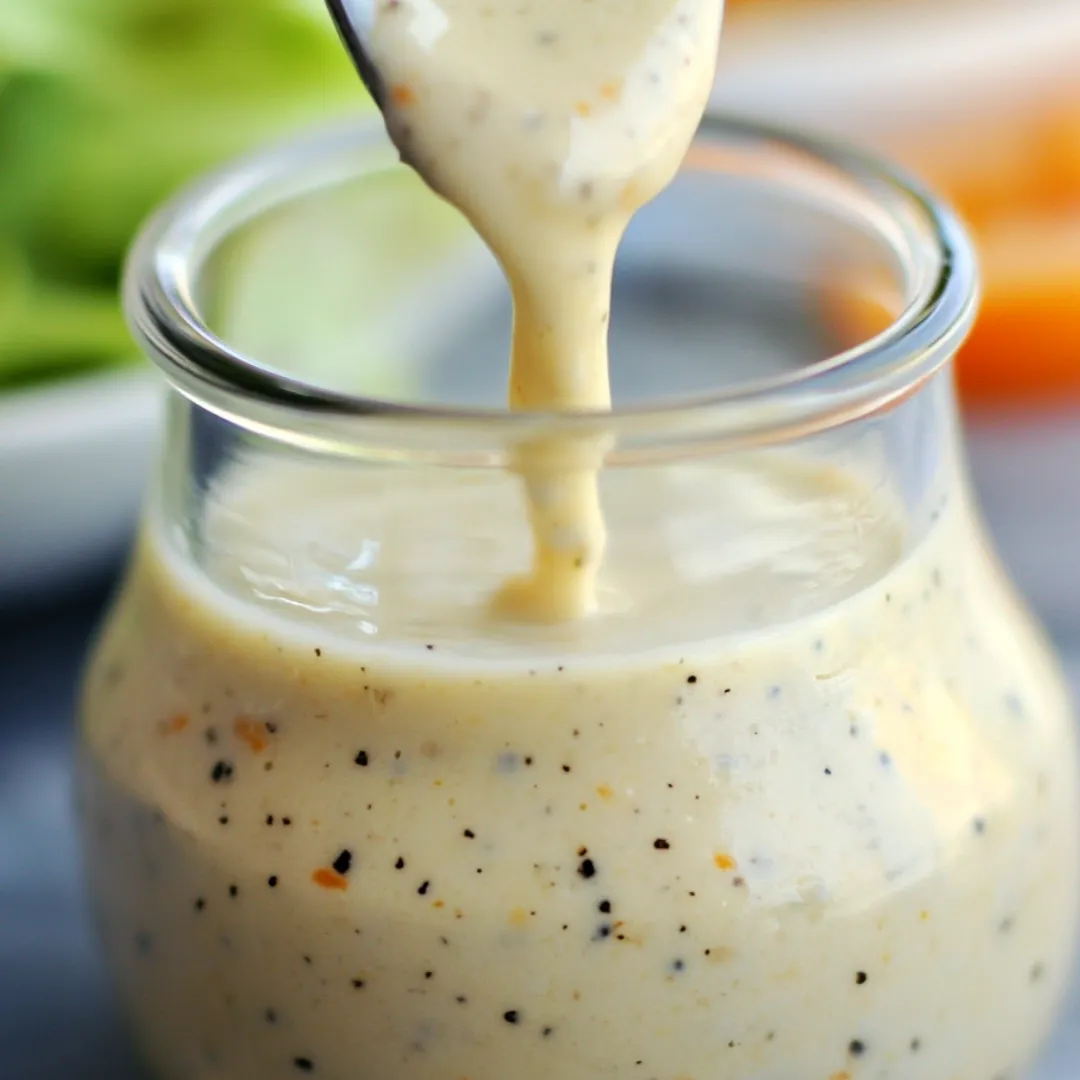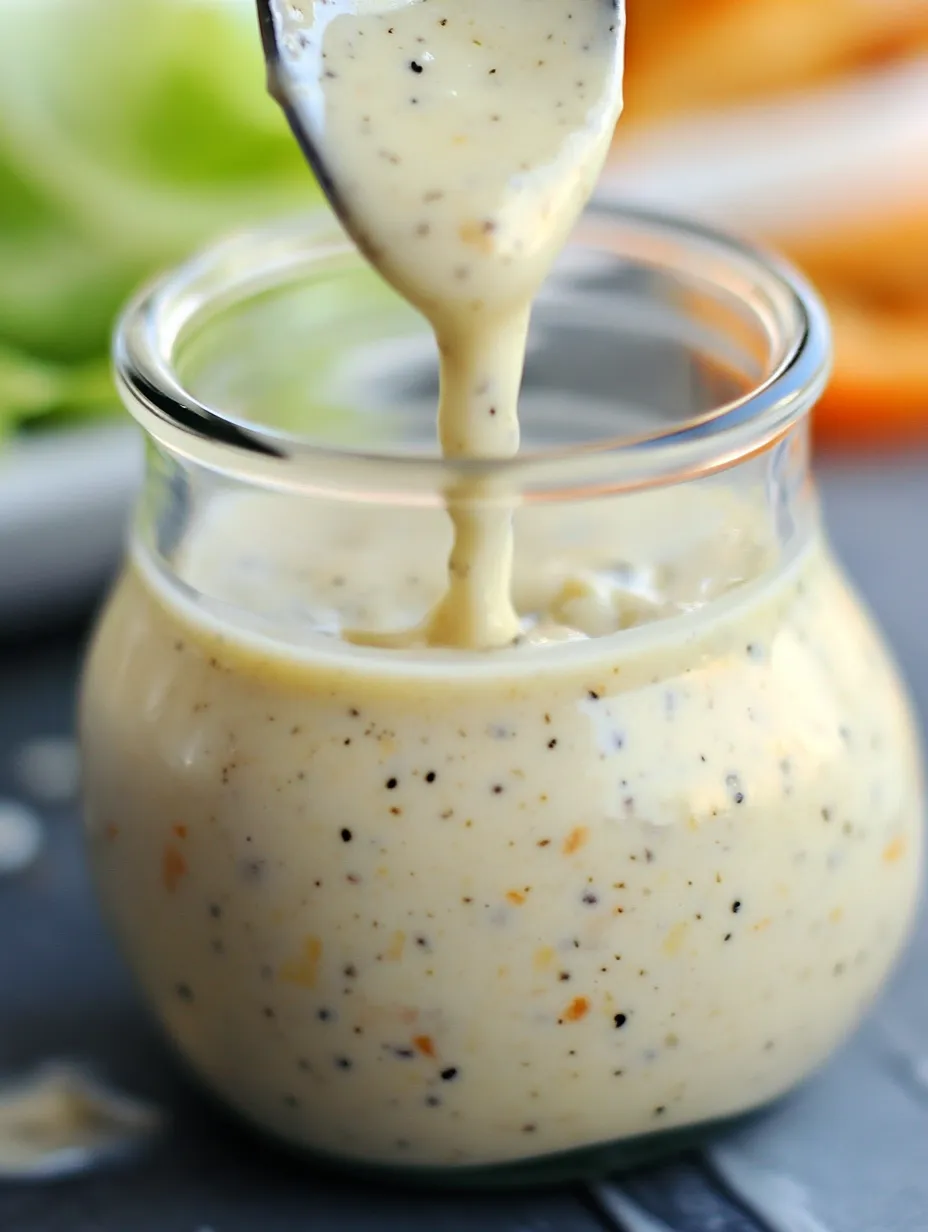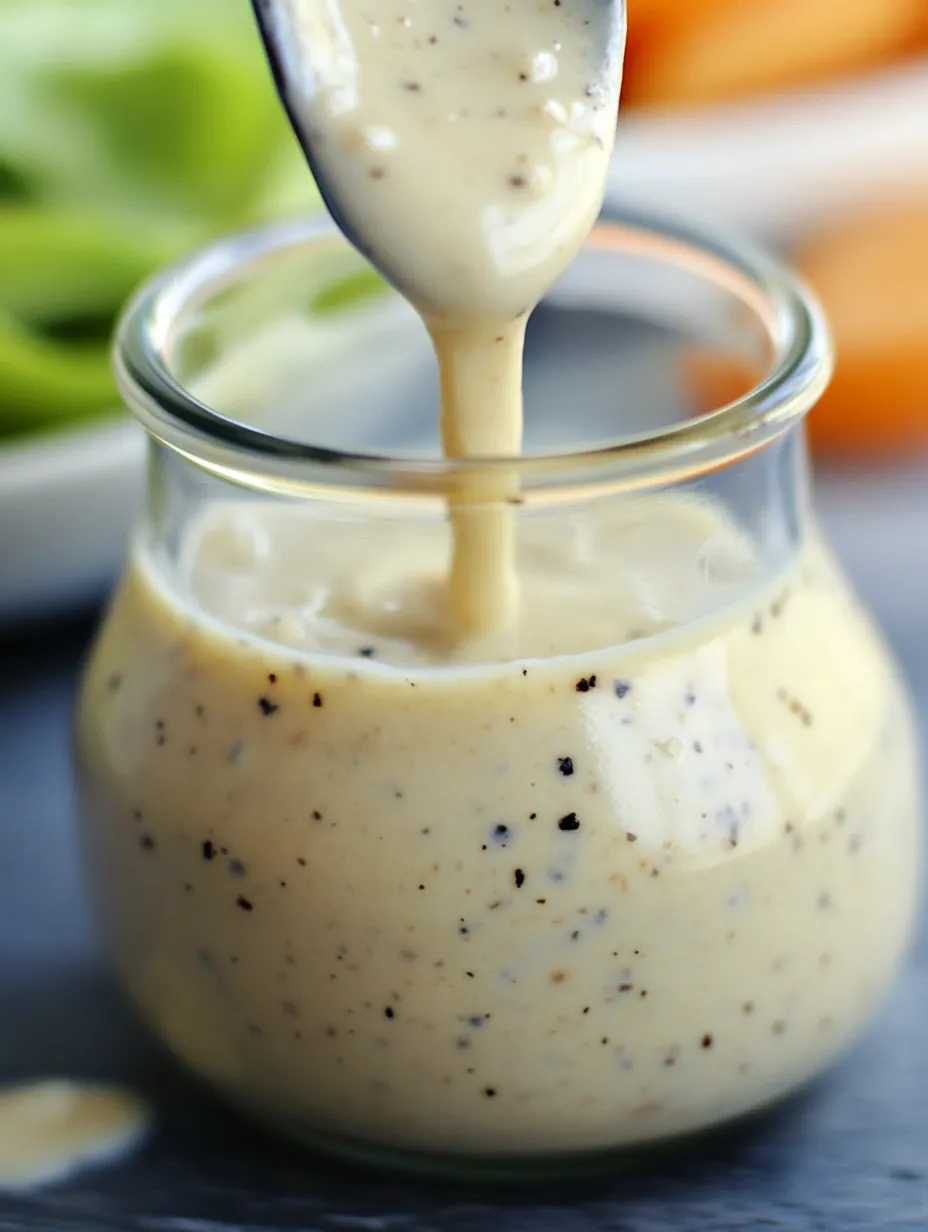 Pin it
Pin it
This silky, luxurious creamy vinaigrette brings together two culinary worlds—the bright acidity of a classic vinaigrette and the velvety richness of a creamy dressing. Unlike store-bought versions laden with preservatives and artificial ingredients, this homemade dressing delivers pure, vibrant flavor that elevates everything from simple green salads to roasted vegetables. The perfect balance of tangy and smooth, this versatile dressing becomes a reliable kitchen ally, transforming ordinary ingredients into something truly special with just a drizzle.
I discovered the magic of homemade creamy vinaigrette during a particularly memorable dinner party at my neighbor's farm. She served a simple garden salad that somehow tasted extraordinary, and when I complimented her, she laughed and said, "It's just a quick dressing I whip up—the secret is balancing the acid and the fat just right." After she shared her technique with me, this dressing became my go-to for transforming everyday meals. Last month, I served a grain bowl topped with this dressing to my pickiest friend who typically drenches everything in ranch, and even she asked for the recipe. That's when I knew this creamy vinaigrette deserved a permanent spot in my recipe collection.
Essential Ingredients
- Mayonnaise: Creates the creamy base that gives this dressing its luxurious texture. Choose a high-quality, full-fat mayonnaise for the richest flavor and smoothest consistency.
- Dijon mustard: Provides depth, slight spiciness, and acts as an emulsifier to keep the dressing smooth. Look for authentic Dijon with a pronounced, sharp flavor rather than milder varieties.
- White wine vinegar: Delivers the essential bright acidity that defines a vinaigrette. Its clean, crisp flavor works beautifully with the creamy elements without overwhelming them.
- Olive oil: Adds richness and helps mellow the acidity of the vinegar. Extra virgin olive oil contributes fruity notes, while lighter olive oils provide a more neutral backdrop.
- Honey or maple syrup: A touch of sweetness balances the acidity and rounds out the flavor profile. Choose raw honey for floral notes or maple syrup for a deeper, caramel-like sweetness.
- Salt and freshly ground black pepper: These essential seasonings enhance and unite all the other flavors. Use kosher salt for better control and freshly ground pepper for brighter flavor.
- Fresh herbs: Optional but highly recommended for adding dimension and freshness. Soft herbs like parsley, chives, or dill complement the creamy base particularly well.
 Pin it
Pin it
Step-By-Step Preparation
- Step 1:
- Select your mixing vessel thoughtfully - Choose a medium-sized bowl that allows ample room for whisking or a jar with a tight-fitting lid for the shake method. A bowl gives you more control to observe the emulsification process, while a jar offers convenience and easy storage. Either way, ensure your container is completely dry, as water can prevent proper emulsification.
- Step 2:
- Create the flavorful base - Add 1/4 cup mayonnaise to your mixing vessel, then incorporate 1 tablespoon Dijon mustard. The mustard not only adds flavor but acts as an emulsifier that helps bind the water-based and oil-based ingredients. Whisk these together until completely smooth with no streaks remaining. This creates a homogeneous base that will better incorporate the remaining ingredients.
- Step 3:
- Introduce acidity with precision - Add 2 tablespoons white wine vinegar (or apple cider vinegar for a slightly fruitier note) to the mayonnaise mixture. The vinegar provides essential brightness that cuts through the richness of the mayo. Whisk thoroughly until the mixture looks slightly looser and well-combined. This balance between creaminess and acidity is the defining characteristic of this dressing.
- Step 4:
- Add the oil gradually - While continually whisking, slowly drizzle in 3 tablespoons of olive oil. The key word is slowly—adding it all at once can prevent proper emulsification. If using a jar, add the oil and shake vigorously for about 30 seconds. This method creates the stable emulsion that gives the dressing its smooth, unified texture. The oil should be completely incorporated with no visible separation.
- Step 5:
- Balance with sweetness - Add 1/2 to 1 teaspoon of honey or maple syrup, starting with the smaller amount and adjusting to taste. The sweetener doesn't make the dressing sweet but rather rounds out the acidic edges. Whisk until the sweetener is fully dissolved and incorporated.
- Step 6:
- Season with intention - Add 1/4 teaspoon salt and 1/8 teaspoon freshly ground black pepper, then whisk to distribute evenly. Proper seasoning transforms the dressing from flat to vibrant, bringing all the flavors into focus. Always taste after this step to ensure the flavor is well-balanced.
- Step 7:
- Incorporate herbs if using - If adding fresh herbs, fold in 1 tablespoon of finely chopped herbs like parsley, chives, tarragon, or dill. Cut herbs just before adding to preserve their vibrant flavor and color. Stir gently to distribute them throughout the dressing without bruising.
- Step 8:
- Rest for flavor development - Allow the dressing to sit for at least 10 minutes before serving, which gives the flavors time to meld and develop. For best results, prepare the dressing up to a day ahead and store it in the refrigerator, bringing it to room temperature before serving.
The Science of Emulsification
What makes this creamy vinaigrette so special is the perfect emulsion—a stable mixture of ingredients that wouldn't normally combine, like oil and vinegar. Understanding the science behind this process helps create a dressing that won't separate and maintains its luscious texture.
The key players in this emulsion are the mayonnaise and mustard. Mayonnaise itself is already an emulsion of oil, egg yolks, and acid. The lecithin in egg yolks acts as an emulsifier, which means it has molecules that are attracted to both fat and water, allowing them to stay mixed together rather than separating.
Dijon mustard contains natural emulsifiers that further stabilize the dressing. When you whisk these ingredients with additional vinegar and oil, you're creating a secondary emulsion that's remarkably stable due to these multiple emulsifying agents working together.
The technique of adding oil slowly while whisking continuously is crucial for proper emulsification. This method allows tiny droplets of oil to form and become evenly dispersed throughout the water-based ingredients, creating that smooth, unified texture that coats your salad leaves perfectly instead of sliding off.
I've learned over the years that the order of adding ingredients truly matters with this dressing. In my early attempts, I would combine everything at once, resulting in a dressing that often separated or never quite achieved that silky texture I was aiming for. The game-changer was when a chef friend showed me the technique of creating a base with the mayo and mustard first, then slowly incorporating the other ingredients. The difference was remarkable—suddenly my dressing had the restaurant-quality consistency I'd been striving for. Now I keep a jar in my refrigerator at all times, ready to transform simple ingredients into something special.
 Pin it
Pin it
Creative Variations
The beauty of this creamy vinaigrette lies in its adaptability. Once you've mastered the basic formula, you can create endless variations to complement different cuisines and ingredients.
For an Italian-inspired version, substitute red wine vinegar for the white wine vinegar, add a clove of finely minced garlic, and incorporate chopped fresh basil and oregano. This variation pairs beautifully with caprese salads or drizzled over roasted vegetables like eggplant and zucchini.
To create a French herb variation, add a tablespoon of finely minced shallots and a teaspoon each of chopped tarragon, chervil, and chives. The delicate anise notes from the tarragon and the subtle onion flavor from the chives and shallots create a sophisticated dressing perfect for simple green salads or as a sauce for cold poached salmon.
For a Greek-inspired twist, use lemon juice instead of vinegar, add a teaspoon of dried oregano and a clove of minced garlic, and fold in a tablespoon of crumbled feta cheese. This robust variation works wonderfully with heartier salads containing cucumbers, tomatoes, and bell peppers.
A southwestern variation incorporates lime juice instead of vinegar, adds a small amount of ground cumin and coriander, and includes chopped cilantro and a dash of hot sauce. This zesty version is perfect for drizzling over grain bowls with black beans, corn, and avocado.
My final thought on this creamy vinaigrette is that it exemplifies how a few simple ingredients, when combined with care and proper technique, can create something far greater than the sum of its parts. There's something deeply satisfying about creating a dressing that transforms everyday ingredients into a memorable meal. Whether you're dressing a simple green salad, elevating roasted vegetables, or finishing a grain bowl, this versatile concoction proves that sometimes the sauce really does make the dish. I've found that mastering this dressing has been one of the most useful skills in my cooking repertoire—it's the little details that often make the biggest difference in how we experience food.
Frequently Asked Questions
- → How long does homemade vinaigrette last?
- This dressing will keep for up to one week in an airtight container in the refrigerator.
- → Can I make this dairy-free?
- Yes! Just use mayonnaise instead of Greek yogurt for a dairy-free version that's still creamy.
- → Why is my dressing separating?
- Separation is normal for homemade dressings. Just give it a good shake or whisk before using.
- → What salads go best with this dressing?
- This versatile dressing works well with garden salads, potato salads, pasta salads, or even drizzled over grain bowls.
- → Can I make this with less oil?
- Yes, you can reduce the oil and increase the yogurt for a lower-fat version, though the texture and flavor will be different.
